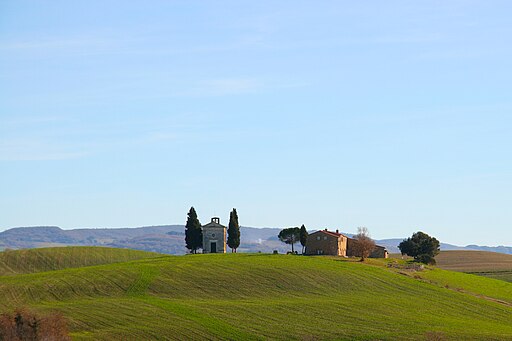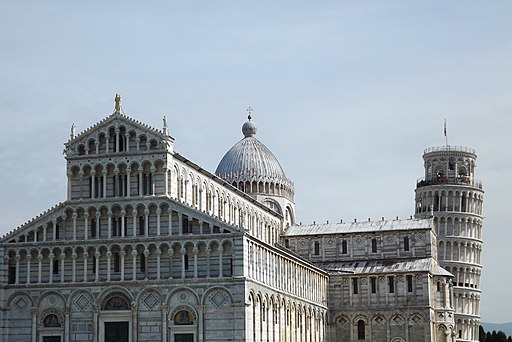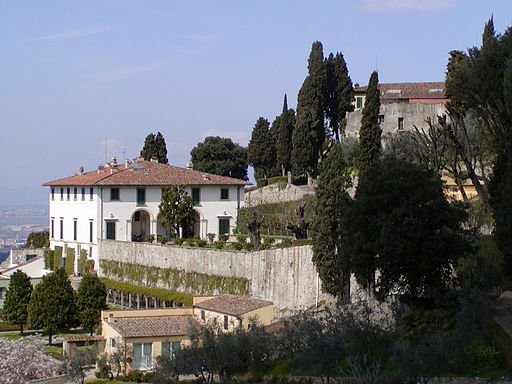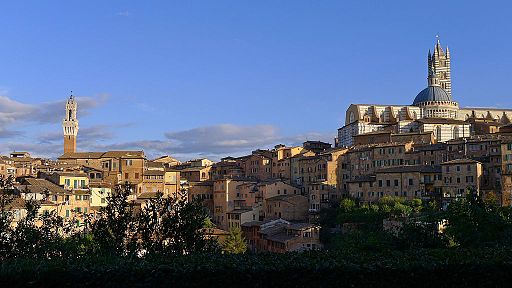The 7 UNESCO World Heritage Sites in Tuscany | Val d’Orcia, Tuscany |
The 7 UNESCO World Heritage Sites in Tuscany are The historic Center of Florence [since 1982], Piazza dei Miracoli in Pisa [since 1987], San Gimignano Historical Center [since 1990], the Historic Centre of Siena [since 1995], Pienza [since 1996], the Val d'Orcia [since 2004] and the Villas and Medici gardens in Tuscany [since 2013].
|
||||
Val d'Orcia [since 2004] |
||||
|
||||
 |
 |
|||
Val d'Orcia
|
Cypress trees between San Quirico d'Orcia and Montalcino | San Quirico d'Orcia, Cappella della Madonna di Vitaleta
|
||
Mappa Tenuta Il Poggione Sant'Angelo in Colle | Ingrandire mappa
|
| Justification for Inscription
Criterion (iv): The Val d’Orcia is an exceptional reflection of the way the landscape was re-written in Renaissance times to reflect the ideals of good governance and to create an aesthetically pleasing pictures. Criterion (vi): The landscape of the Val d’Orcia was celebrated by painters from the Siennese School, which flourished during the Renaissance. Images of the Val d’Orcia, and particularly depictions of landscapes where people are depicted as living in harmony with nature, have come to be seen as icons of the Renaissance and have profoundly influenced the development of landscape thinking.
|
||||
|
||||
Other Unesco World Heritage Sites in Tuscany
|
||||
 |
 |
 |
||
The historic Center of Florence
|
Piazza del Duomo, Pisa | San Gimignano
|
||
 |
 |
 |
||
The historic Center of Pienza
|
Medici Villa's and gardens
|
Historical center of Siena | ||
|
||||
| Podere Santa Pia, casa vacanze in Tuscany |
|
|||


